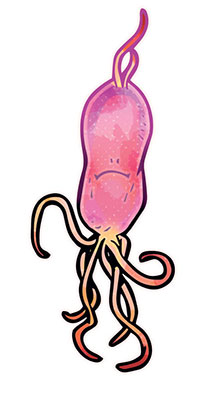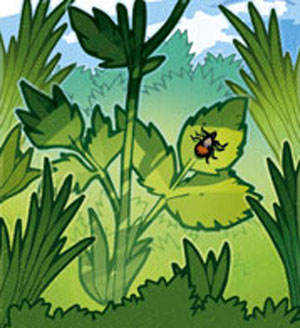By continuing your visit to this site, you accept the use of cookies.
Learn + I agreeAnaplasma phagocytophilum

Anaplasma phagocytophilum is an intracellular1 bacterial species. It belongs to the same family as rickettsia.
Tick transmission
This bacterium is transmitted by the sheep’s tick (Ixodes ricinus), highly present in Switzerland.
Researchers from the Institute of Microbiology of Lausanne, in collaboration with the National Reference Centre for tick-transmitted diseases, have analyzed over 63’000 ticks collected in 172 different places in Switzerland and have observed that about 2% of them are infected with Anaplasma phagocytophilum.
The disease caused by this bacterium is called human granulocytic anaplasmosis (HGA). It presents with fever, headaches, and a decrease in white blood cells2 and platelets3 in the blood.
A study performed in Switzerland in 2003 showed that 10% of the people with fever after a tick bite have antibodies4 against Anaplasma phagocytophilum,suggesting they were in contact with the bacterium.


Yet, Anaplasma phagocytophilum is rarely considered by doctors in patient that present a fever after a tick bite.
Human granulocytic anaplasmosis is usually a harmless disease that can spontaneously heal in less than a month.
However, patients with weak immune systems5 (young kids, pregnant women, transplant patients or patients under chemotherapy treatment) might require antibiotic6 treatment.
Intracellular1 = Defines a bacterium that needs to be inside a cell to survive and multiply. Some bacteria are strictly intracellular, since they cannot multiply outside of a cell. Then there are facultative intracellular bacteria that can replicate even without a host cell. The strictly intracellular bacteria are difficult to grow in the laboratory and thus often remain undetected with cultivation methods routinely used for diagnostic purposes.
White blood cells2 = Blood cells that are part of the body’s immune system against microbes. We call them leukocytes as well.
Platelet3 = Small cell without a nucleus found in the blood and required for coagulation.
Antibodies4 = Molecules produced by specific immune cells following an infection or a vaccination. They recognize foreign organism and provide protection against them.
Immune systems5 = Set of mechanisms (antibodies, white blood cells…) protecting us from infections.
Antibiotic76 = A drug which allows to kill bacteria or at least to stop their growth. Antibiotics act against bacteria, but do not help treat diseases caused by viruses and parasites.
